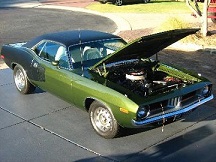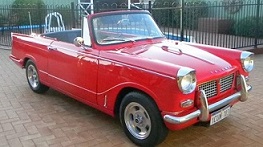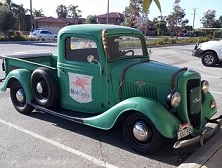|
Author
|
Message
|
|
2721955meteor
|
|
|
Group: Forum Members
Last Active: Last Year
Posts: 927,
Visits: 190.0K
|
Kahuna (12/15/2016)
Meteor, I have the same setup on my car as yours. Did you block off the vent holes in the oil fill cap? My car is not running yet, just wondered? Thanks Jim no i did not block off the filler cap,my road draft(original type)worked fine but got the odd smell of base bloby so made a pct set up.
|
|
|
|
|
Kahuna
|
|
|
Group: Forum Members
Last Active: 6 Years Ago
Posts: 471,
Visits: 2.4K
|
Meteor, I have the same setup on my car as yours. Did you block off the vent holes in the oil fill cap?
My car is not running yet, just wondered?
Thanks
Jim
|
|
|
|
|
2721955meteor
|
|
|
Group: Forum Members
Last Active: Last Year
Posts: 927,
Visits: 190.0K
|
rodgers pictures ar great,they show that the original post is incorrect and ther is no proper circulation. the pcv sucks from the same source the valley cover and valley cover air in promotes limited circulation,even if the system where closed
|
|
|
|
|
Talkwrench
|
|
|
Group: Forum Members
Last Active: 4 Years Ago
Posts: 898,
Visits: 23.2K
|
Joe-JDC (12/14/2016)
As an automotive instructor for a couple of years at the Junior College level, it was taught that an engine needs to get up to operating temperature for a certain number of minutes or driven at least a minimum of miles so that the water vapors inside the engine would be eliminated. We always taught that an engine needs at least 20 minutes of continuous running, or seven miles driven at normal city street speeds or above. Backing a vehicle out of the garage to get access to another vehicle, or wash it, and pull it back in is one of the worst things you can do for the oil and combustion chambers. Proper thermostat temperature range, letting the oil and water temperatures get up to operating specifications, and driving the vehicle are the best remedies for oil dilution or milky build up in the valve covers. The milky oil sludge will build up even in warm climates if you do not drive the vehicle to get it up to operating temperatures for several minutes. Joe-JDC That is my understanding as well... I am right on 20 minutes to get to work and my ol' flathead is still not up to temp even with the radiator covered and 180 thermostats [almost unheard of in a flathead!] this with winter weather, which is not that cold here, but still gives me condensation as you see from my earlier picture, guess its just the cold air getting sucked in too as it rests. Someone once said it also takes about 20 minutes to put the charge back in your battery from starting it too..
   
"Came too close to dying to stop living now!"
|
|
|
|
|
Joe-JDC
|
|
|
Group: Forum Members
Last Active: 4 hours ago
Posts: 772,
Visits: 22.5K
|
As an automotive instructor for a couple of years at the Junior College level, it was taught that an engine needs to get up to operating temperature for a certain number of minutes or driven at least a minimum of miles so that the water vapors inside the engine would be eliminated. We always taught that an engine needs at least 20 minutes of continuous running, or seven miles driven at normal city street speeds or above. Backing a vehicle out of the garage to get access to another vehicle, or wash it, and pull it back in is one of the worst things you can do for the oil and combustion chambers. Proper thermostat temperature range, letting the oil and water temperatures get up to operating specifications, and driving the vehicle are the best remedies for oil dilution or milky build up in the valve covers. The milky oil sludge will build up even in warm climates if you do not drive the vehicle to get it up to operating temperatures for several minutes. Joe-JDC
JDC
|
|
|
|
|
2721955meteor
|
|
|
Group: Forum Members
Last Active: Last Year
Posts: 927,
Visits: 190.0K
|
the picture of the system points to the cap on the oil filler is most likely a issue,the hose to the air cleaner is to try and eliminate excessive blow by or error,as the cap on oil filler must be free to alow air into the engine and this will alow the pct to function correctly. I to live in a wet damp aria surrey bc and have no such issues. do a lot of short runs,. i left the old road draft on the block as well as a pcv system and a proper cover on oil filler. 180 stat. never smell fumes ,no condensation in filler. engine is not fresh but burnes no oil. this site has a lot of solutions,most won't work,some will.
|
|
|
|
|
The Master Cylinder
|
|
|
Group: Forum Members
Last Active: 4 Years Ago
Posts: 974,
Visits: 6.2K
|
Water is also a byproduct of combustion and a certain amount bypasses the rings. I agree that you should ensure you are getting the engine warm enough to vaporize the water (and other nasty stuff) in the crankcase. Use a 180 or 190°F thermostat and don't run the engine for short amounts of time. Not getting an engine up to temperature is also hard on your exhaust system. Also, as stated, ensure your PCV system is working as it should.
 "The Master Cylinder" "The Master Cylinder"
Enjoying life at the beach in SOCAL 
|
|
|
|
|
57RancheroJim
|
|
|
Group: Forum Members
Last Active: Last Year
Posts: 729,
Visits: 112.0K
|
I use to have a similar problem on my 223 I6, switching from the factory 160 thermostat to a 180 helped a lot. I also use a 180 in my Y block.
|
|
|
|
|
miker
|
|
|
Group: Forum Members
Last Active: Last Month
Posts: 1.9K,
Visits: 194.9K
|
Cliff, you're right, the oil has water in it. But having spend my life in the Pacific Northwest I can tell you that water gets in thru the atmosphere and won't clear unless the engine stays at temperature and the road draft of PCV system works well enough to clear it.
In the winter of 1969, over Christmas, it was just over 32 degrees and constant light rain. Driving short trips to see my friends instead of the 20 mile trip to school, I pulled the valve covers to set the valves and found 1/2 inch of foam. Freaked out. Dad came home and said " yeah, they do that all the time. Go get it warm". I went 25 miles up the freeway and 25 miles back. Pulled the valve covers and they were clean.
1: the old man was right, as usual.
2. It's the reason I'm a big believer in closed PCV system, and not doing just short trips.
miker
55 bird, 32 cabrio F code
Kent, WA
Tucson, AZ
|
|
|
|
|
Cliff
|
|
|
Group: Forum Members
Last Active: 2 days ago
Posts: 878,
Visits: 13.5K
|
That oil has water in it, it has an internal leak, it may stay the same or get worse, it may just take a re torque of the heads however something must be done.
Cliff
|
|
|
|